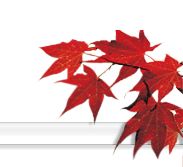| Watling, Thomas
|
| [between 1792 and 1794] |
| 15.6 x 16.5 cm |
| Watling Drawing - no. 200 |
|
| hide detailed image description |
Bird in profile, facing to the left, perched on a tree branch against a plain background. The upper parts of the bird are predominantly olive green, except for a yellow crown overlaid with black hatched lines and a black patch extending round the eye to the neck, enclosing a yellow tuft. The underparts are yellow. The drawing is framed by a pencil border and annotated in ink and pencil.
|
|
| hide notes |
- Thomas Watling]
- The drawing is annotated ink ink at bottom "Half the natural size" in what appears to be Watling's copperplate hand, and "Native name Dar-wang" below. The right hand edge of the drawing appears to have been cropped, with the loss of some text.
- The drawing is signed "T. Watling, delt.", but is undated.
- The drawing is annotated in pencil at top "Black-eyed Thrush Syn. Sup 2. 181". This has been copied in ink at bottom, "Black eyed Thrush, Latham Syn Suppt. 2. p.". The page reference is to Latham's Second Supplement to the General Synopsis of Birds (1802).
- The drawing is inscribed in ink at top right with the number "122.". This refers to the catalogue list compiled by John Latham c. 1801 which was acquired with the drawings, and is filed with them at the end of the Watling Drawings series.
- The drawing is annotted in pencil at top "Lambert Drawing II. 40". This refers to a related set of drawings from the collections of the 13th Earl of Derby, held in the Library at Knowsley Hall, Lancashire.
- There is a partial annotation in pale brown ink on the reverse of the drawing, which reads, "Darwang [underlined] It is a very lively bird & by us call'd the yellow eared fly Catcher - the tongue feathered at the tip for sucking Honey a /it is very fond of. It builds its nes the Pensile branch of some low tree or sh as I suppose to avoid the opossum, fly Squirrel, Lizards, Guana 's's & birds & Mice the yellow at the Ears are tufts of feathers longer than". The edges of the text appear to have been lost when the drawing was cropped. The full text appears on a separate sheet mounted below the drawing.
- A separate sheet of laid paper measuring 5.5 x 19.7 cm. is mounted below the drawing. It is inscribed in pale brown ink "The Native name of this very common Bird in New south Wales is Dar-wang. It is a very lively Bird, and by us called the yellow eared Flycatcher. the Tongue is feathered at the tip for Sucking Honey, which it is very fond of. It builds its Nest on the pensile branch of some trees or low shrubs, as I suppose to avoid the opossum, flying Squirrel, Lizard, Guana, and Birds and Mice. The yellow at the Ears are Tufts of Feathers longer than those on the other part of the Head.", and in darker brown ink, "Black eyed Thrush, Latham Syn Suppt 2. p. 181". The number "!22" is inscribed in blue pencil at top right.
- A separate label is attached to the mount alongside the drawing at lower right. It is inscribed in pencil "Type".
- This bird was more recently identified as the Yellow-tufted Honeyeater Meliphaga melanops in Hindwood K. A. (1970). (ITIS gives Lichenostomus melanops as the preferred taxonomic name for the Yellow-tufted Honeyeater.)
- The author of this catalogue record is Suzanne Stenning.
- By permission of the trustees of the Natural History Museum (London)
- Two sets of transparencies held in the Natural History Museum (London) Zoology Library and Picture Library: Picture Library reference number 12200
- James Lee of Kensington : purchased ; 1902
- Data sheet available
- Latham, John. Supplement II to the General Synopsis of Birds. London: Leigh, Sotheby, 1802.
- Hindwood K. A. 'The "Watling" drawings with incidental notes on the "Lambert" and the "Latham" drawings', Proceedings of the Royal Zoological Society of New South Wales for the years 1968-69 (1970).
|
|
|


![[Yellow-tufted Honeyeater, Lichenostomus melanops]](image.dsml?imageref=NHM-UK_L_a350710_200_M_1.jpg&width=300)